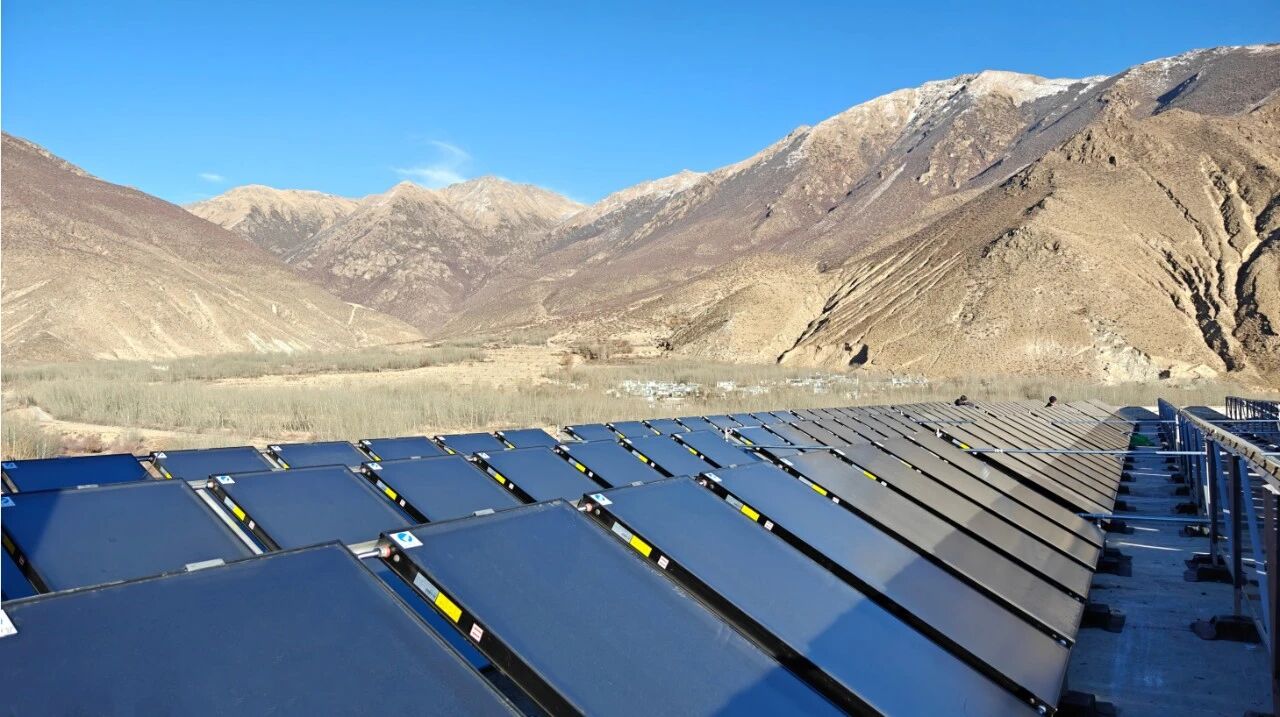BTE Solar: What are some reliable solar heating solutions?
The saying "Northerners rely on central heating to get through winter, Southerners rely on courage" reflects the deep-seated need for warmth during the winter. However, the pungent smell of traditional coal-fired heating and the high cost of gas heating add a significant burden to this need. Now, solar heating, with its clean and economical advantages, is rising rapidly, becoming a new choice for more and more families and businesses.
What are the ins and outs of solar heating? Which solution should be chosen for different scenarios? What professional guarantees can the industry-leading Shengtuo Technology Group provide? This article will explain it all to you!
Two Core Methods of Solar Heating
Solar heating is not a single technology that relies solely on the weather; rather, it's a diversified solution based on the combination of medium and heat source. The core can be divided into two categories:
1. Solar Air Heating: A Worry-Free Choice for Dry Regions
This method uses air as the heat transfer medium. Solar air collectors absorb sunlight and convert it into heat, which is then transported indoors or to a heat storage device by a fan. Its biggest advantage is its simplicity—no complex water piping system is required, and waterproofing and pipe layout are not a concern during installation. It is especially suitable for users in dry northern regions or areas with hard water.
(For factories, warehouses, greenhouses) For large spaces like greenhouses, it's an even more cost-effective choice: it heats up quickly, avoids problems like frozen pipes and scale buildup in winter, and requires almost no maintenance.
2. Solar + Auxiliary Energy Heating: A Stable Guarantee for All-Day Weather
Due to the influence of nighttime and rainy weather, solar heating alone cannot guarantee stable 24-hour heating. The "solar + auxiliary energy" model solves this problem. During the day, it mainly relies on solar collectors to generate heat, with excess heat stored in a phase change thermal storage tank. When sunlight is insufficient, the system automatically switches to auxiliary heat sources (air source, gas boiler, electric heating, etc.). Traditional energy sources ensure consistently high indoor temperatures.
During the non-heating season, it can switch to domestic hot water supply mode, fully meeting the hot water needs for washing vegetables in the kitchen and showering in the bathroom, maximizing energy utilization. It achieves the dual convenience of "heating + hot water," and is highly praised by users.
Heating Type: Centralized VS Distributed
The choice of heating type directly affects the user experience; the key is to match it with the building's scale and distribution characteristics:
1. Solar Centralized Heating: A "High-Efficiency Solution" for Communities and Industrial Parks
Suitable for newly built residential communities, industrial parks, schools, and other densely packed buildings. A unified large-scale solar collector array, large-capacity thermal storage tank, and pipeline system centrally generate heat and then distribute it to various users.
The advantage of this approach lies in its significant economies of scale: centralized management reduces operation and maintenance costs, large-scale collectors have higher heat absorption efficiency than household equipment, and combined with an intelligent control system, it can precisely balance the heating needs of different buildings, making it a "standard choice" for urban green building projects.
2. Distributed Solar Heating: A "Flexible Option" for Scattered Buildings
For scattered scenarios such as rural self-built houses, suburban villas, and dispersed factories, distributed... Distributed heating offers significant advantages. Each building is equipped with a small solar collector and storage system, eliminating the need for complex external piping and allowing for flexible installation locations (rooftops and open ground are both suitable).
In remote areas where "coal-to-electricity" and "coal-to-gas" conversions are difficult to implement, distributed heating is a timely solution, avoiding the high costs of large-scale pipeline construction while providing users with the convenience of clean heating.
Key Factors of Solar Heating
The success of a solar heating system depends 30% on the product and 70% on the installation; choosing the right service provider directly determines the system's lifespan. Heating efficiency. As a national specialized and innovative "Little Giant" enterprise, Shengtuo Technology Group boasts two major advantages to safeguard users:
1. Full-Scenario Customization: Rejecting "One-Size-Fits-All" Solutions.
Different regions have vastly different sunlight conditions, building structures, and heating needs. Shengtuo Technology abandons "standardized" products, providing customized services throughout the entire process of "survey-design-construction-commissioning."
2. Core Technology Support: Efficiency and Stability Online.
Technological strength is the core guarantee of heating performance. Shengtuo Technology is a technology-based group enterprise with a complete industrial chain of solar energy comprehensive utilization solutions. It has 7 subsidiaries and 6 major production lines. Production Base. For two consecutive years, the annual output of flat-plate solar collectors has ranked second globally. In collaboration with 19 universities and research institutions, including the Chinese Academy of Sciences, Tsinghua University, and the Shandong Academy of Sciences, 117 patented technologies and solutions have been obtained.
In the field of selective heat absorption coatings for solar energy, BTE Solar is one of the few companies in the world capable of simultaneously producing both "blue film" and "black film" coatings. Its independently developed intelligent control system can monitor solar radiation intensity, heat storage temperature, and indoor demand in real time through multi-dimensional sensors, automatically switching operating modes to avoid energy waste. One-stop service from equipment production to installation and after-sales support.







